A new variety, Haworthia mucronata var. rooibergensis is described in Haworthiad 13:5 (1999). It raises many questions, and leaves as many unanswered.
What do the authors, Esterhuizen and Battista, mean by Haworthia mucronata?. A very curious picture emerges. There are two sources which must be considered recent and hopefully authoritative. These are C.L.Scott, and M.B.Bayer. Bayer does not use the name mucronata and therefore Scott must be presumed to be the authority followed. But Scott regards H. habdomadis as a separate species whereas Esterhuizen and Battista treat it as a variety of H. mucronata. The two authors also say that their new variety, where it occurs east of Vanwyksdorp (and presumably also their mention of its occurrence south of Calitzdorp), is on the southern boundary of the H. mucronata complex. Who do they follow? If they are using Scott (or Von Poellnitz for that matter) they seem to have mistaken the given distribution. Scott’s distribution map gives five points for H. mucronata which must by south of Vanwyksdorp, and one of these is even west of Mossel Bay. There are also two points north and east of Queenstown.
Curiously, Von Poellnitz is considered to have taken the two Haworth species viz. altilinea and mucronata as synonymous. Scott uses the first for what I called H. cooperi (var. pilifera in my revision), where he also recognises H. pilifera with practically the same distribution. He places his two species altilinea and pilifera in different sections. He does cite the direct synonym H. altilinea var. mucronata = H. mucronata var. mucronata, but Von Poellnitz does not. Scott cites Feddes Repert. 45:169(1938) as his source. I have a hand written translation in which H. altilinea var. typica is distinguished from H. altilinea var. mucronata. The distributions for these two elements is extraordinary viz. typica from Stockenstroom, Seymour, Redhouse, Grahamstown, Cathcart, Zwartkops, Prince Albert, Hankey, Longmore (Loerie), and mucronata from Adelaide, Albany, (Van)Wyksdorp and Wolwefontein (Jansenville). Effectively H altilinea var. typica was left in taxonomic limbo, and I am not sure if my new revision has followed all these devious ramifications. I can only hope it does. Triebner and Von Poellnitz transfer the varieties of altilinea to mucronata in Feddes Repert. 49:23, 1940 but seem to omit both var. mucronata and var. altilinea.
I can now only try to explain the incongruity of the situation in terms of what I know. Firstly, I know that both Von Poellnitz and Scott were confusing H. mucronata and H. bolusii (at least as far as the variety blackbeardiana is concerned). This confusion is itself indicative of the validity of a new variety which “at fist sight looked very much like H. bolusii“! Secondly I know that Scott also recognised H. aristata, H. mcclarenii and was also noting plants from west of Barrydale (mistaking them for my H. serrata), which I currently think belong with his concept of H. mucronata. This is where I think H. habdomadis also belongs. One has to know that the variety H. bijliana var. joubertii (which I believe came from immediately north of Ladismith per communication with A.J.Joubert) comes into contention. This is in relation to the comparison Esterhuizen and Battista make with H. altilinea var. brevisetata. That variety did in fact originate at Vanwyksdorp, but Von Poellnitz also cites H altilinea var. mucronata from there. He later cites the var. brevisetata from also Albany and Port Elizabeth. This is in Feddes Repertorium 49:29 (1940) where he also cites H. altilinea var. inermis from Halesowen, Queenstown, Ladismith and Hankey. A better comparison could have been made with this concept of inermis or with joubertii of Von Poellnitz, rather than with brevisetata. I personally think either choice is irrelevant given either:-
1. the various localities cited by Von Poellnitz, or
2. the variation that occurs, for one example, just west if Ladismith where the element habdomadis ‘moves’ from sandstone to shale.
In describing the variety in the detail that they do, and in stating that it “at first sight looked very much like H. bolusii“, the authors invite this comment. I personally very much doubt if any descriptive detail has been given and could be given, which could be used by anyone, to identify a plant of this variety with any certainty from variants of the species H. bolusii, H. cooperi, H. gracilis or H. decipiens, let alone from the many variants of H. mucronata itself. These species are themselves interlinked and I have stated that they are only real as systems in their geographical context.
A curious aside is that, I cannot find the transfer of the name var. brevisetata from H. altilinea to H. mucronata. Von Poellnitz made all the other changes in Feddes Repert.49:29 (1940), and Scott cites this reference for the change to H. mucronata var. brevisetata. I cannot find this in my photocopy of Von Poellnitz’ paper, and Breuer (in his outstanding compilation of the literature) also loses the epithet, as a “Nomen dubium” under H. altilinea. I think he also has lost the var. typica. My statement in my Handbook (1983).. “Von Poellnitz in the same year reduced this variety to synonymy with H. mucronata“, is fallacious and I cannot explain it.
There is a further problem with the citation by Esterhuizen and Battista which reads “North of Uniondale plants are found which may also be H. mucronata“. I consider that this is the same citation for H. decipiens which they give earlier in the paper.. “this species..is growing about 20km north west of Uniondale”. They also relate this to their new variety as “showing (some of the same) characteristics” . The problem is that this is all a vast understatement of its true nature. In my newest book which constitutes a formal revision, I have re-described the situation of the species arachnoidea and mucronata. Here I wholly alter the order I had in my previous works and try to accommodate my respected friend Col. Scott as well. The Uniondale references above are not resolved. There is already a massive interaction or interplay between H. arachnoidea and H. mucronata. The same is evident for H. decipiens and H. mucronata north of the Kleinswartberg, between Calitzdorp and Oudtshoorn, and for H. mucronata and H. lockwoodii south of the Rooiberg Pass and east of the Anysberg. The Uniondale area is grossly under-explored but is known to be touched by the interplay of H. cymbiformis, H. gracilis, H. decipiens, H. bolusii and H. cooperi. This is all fairly evident in Hayashi’s speculative analysis of Haworthia in the same edition of Haworthiad, and it is also evident from the localities cited by von Poellnitz. Unfortunately that work, although its intrinsic message is excellent, also has severe limitations. I have my doubts as to whether Esterhuizen and Battista are aware of any of the above ramifications relating to their new taxon.
Since I first drafted my revision in 1996, I have recognised the reversal in the fortunes predicted by Bruyns in Kew Magazine (4:148, 1987) where he wrote of Haworthia taxonomy being set back 40-50 years. Consequently I have felt the need to do further exploring and recording to expand my observations and possibly verify the predictiveness of even my latest work. I can here confirm that there is a better solution in at least one area and that relates to H. bolusii var. blackbeardiana. I am preparing a separate extensive explanation of that solution. The illustrations for this present article also contribute to that new solution.
The photographs submitted, show the variation which extends continuously from Aliwal North (H. bolusii var. blackbeardiana, JDV97/62-1), southwards to Queenstown (JDV92/22-2), to Stutterheim (JDV94/60-3), across westwards to Somerset East (H. decipiens var. pringlei, MBB6561-4,-108, H. aristata MBB6852-5,-126), to Jansenville and Willowmore (H. decipiens var. pringlei MBB6582-6,-131, MBB6583-7,-132, H. bolusii var. bolusii! MBB6856-8). Then the illustrations show the continuity from H. cooperi var. gordoniana (it could be H. gracilis var. isabellae) from Hankey and Patensie (MBB6799-9,-10,-41) through Joubertina (MBB6810-11,-12,-74) going westward to Uniondale (JDV90/80-13,-75). From here I switch to H. decipiens var. cyanea in the Beaufort West and Merweville districts (JDV90/105-14, MBB6885-15), H. decipiens morphing to H. mucronata west of Prince Albert (H. decipiens var. decipiens! JDV93/71-16,-17), and finally just two of many H. mucronata variants (JDV86/84-18, JDV91/74-19).
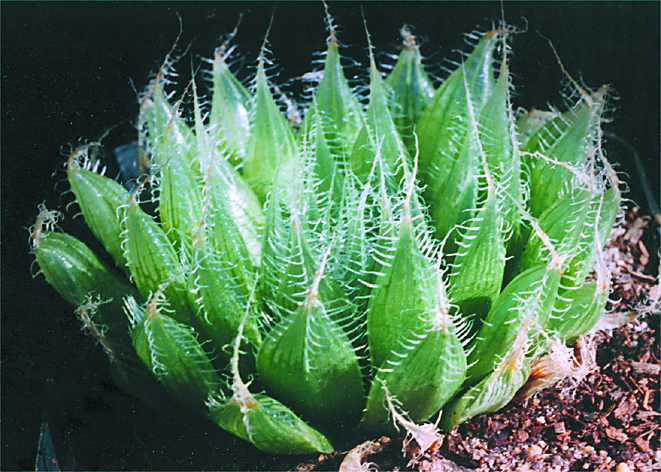
62. JDV97/62 H. bolusii var. blackbeardiana, southeast of Aliwal North. 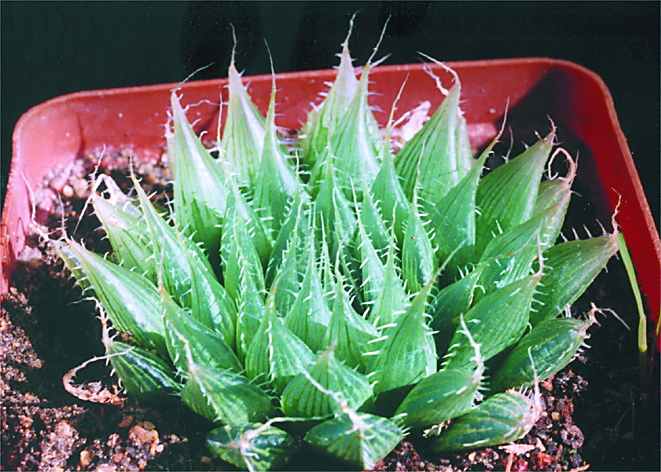
63. JDV97/22 H. bolusii var. blackbeardiana, Fincham’s Neck, Queenstown. 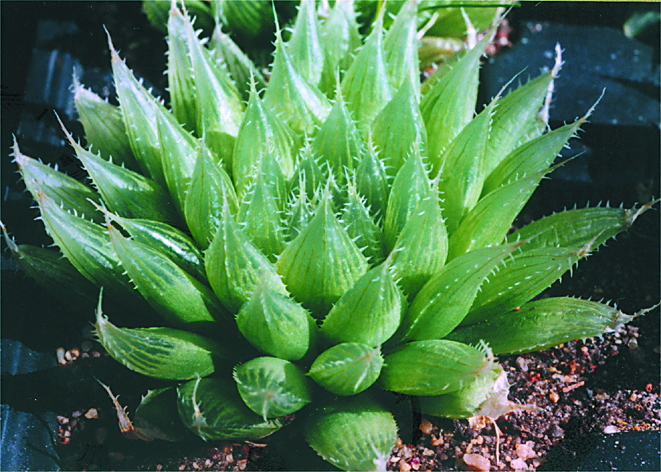
64. JDV94/60 H. bolusii var. blackbeardiana, Stonefell, northeast of Stutterheim. 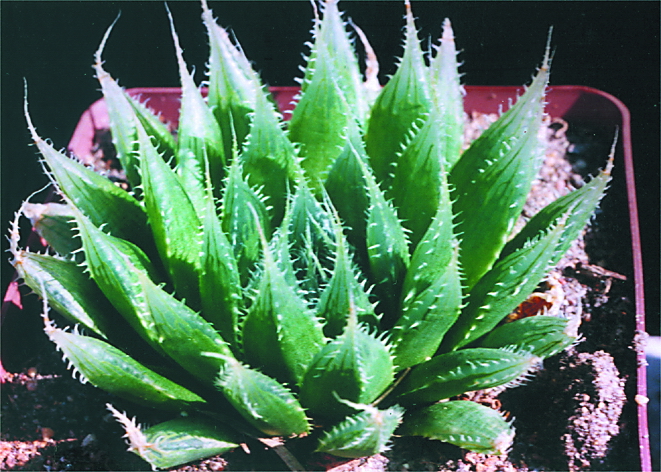
65. MBB6561 H. decipiens var. pringlei, Patryshoogte, east of Somerset East. 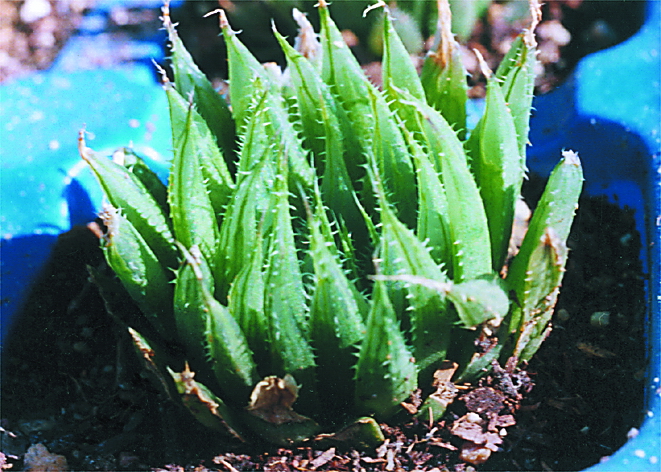
66. MBB6852 H. aristata, Stonefountain, south of Somerset East. 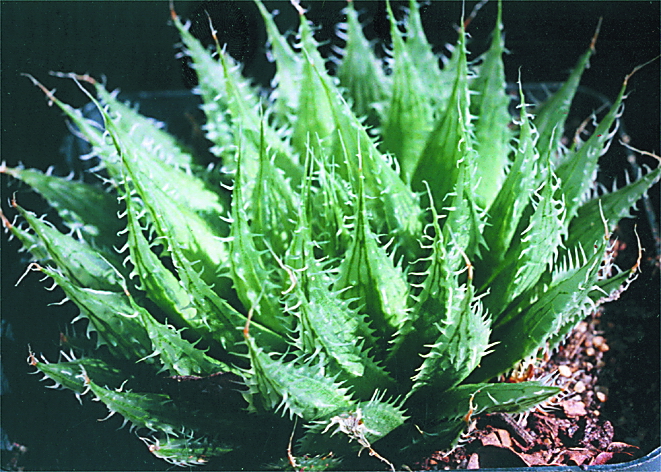
67. MBB6582 H. decipiens var. pringlei, southeast of Mt. Stewart. 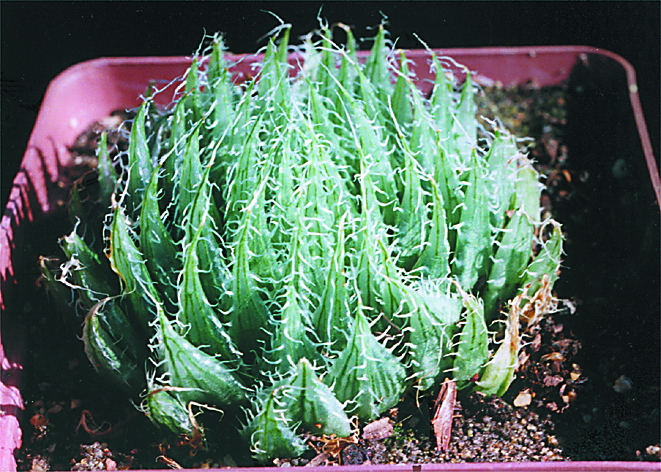
68. MBB6583 H. decipiens var. pringlei, Waaipoort, southeast of Mt. Stewart. 
69. MBB6856 H. bolusii var. bolusii (!), northeast of Fullarton. 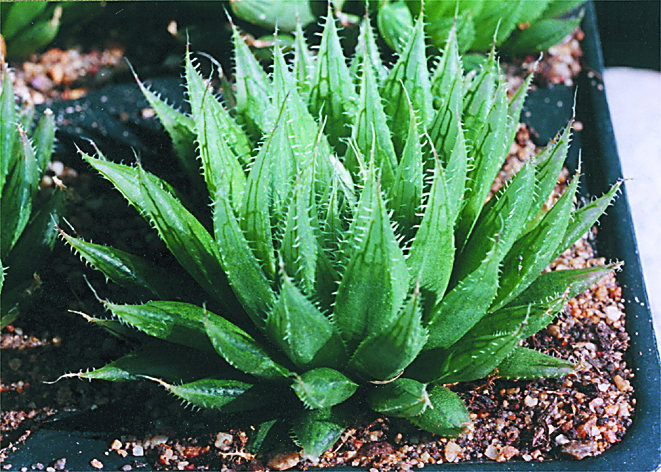
70. MBB6799 H. cooperi var. gordoniana, northwest of Patensie. 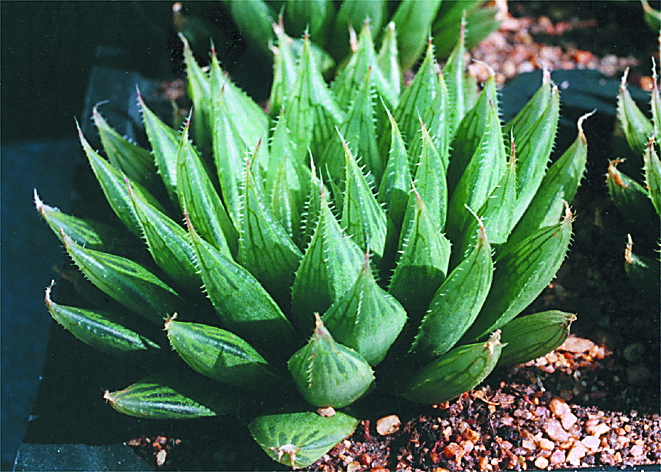
71. MBB6799 H. cooperi var. gordoniana, northwest of Patensie. 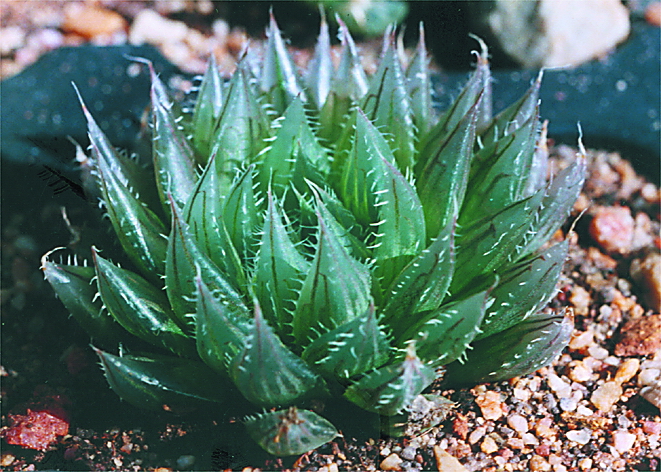
72. MBB6810 H. cooperi var. gordoniana, north of Joubertina. 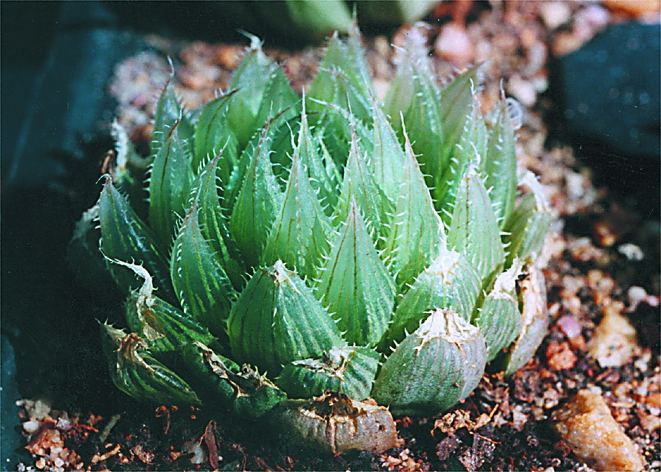
73. MBB6810 H. cooperi var. gordoniana, north of Joubertina. 
74. JDV90/80 H. cooperi var. gordoniana, south of Uniondale. 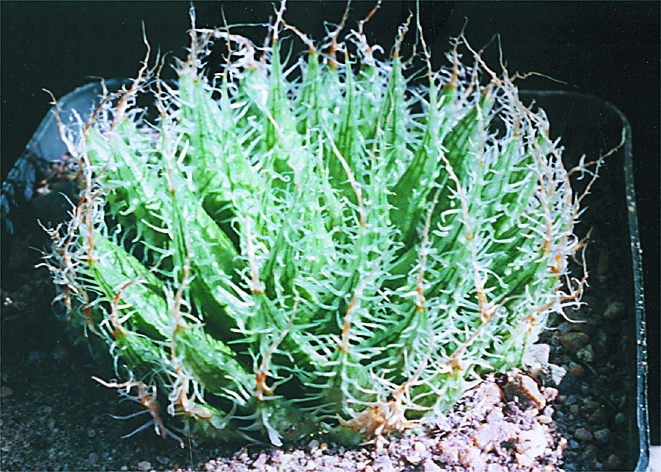
75. JDV90/105 H. decipiens var. cyanea, east of Merweville. 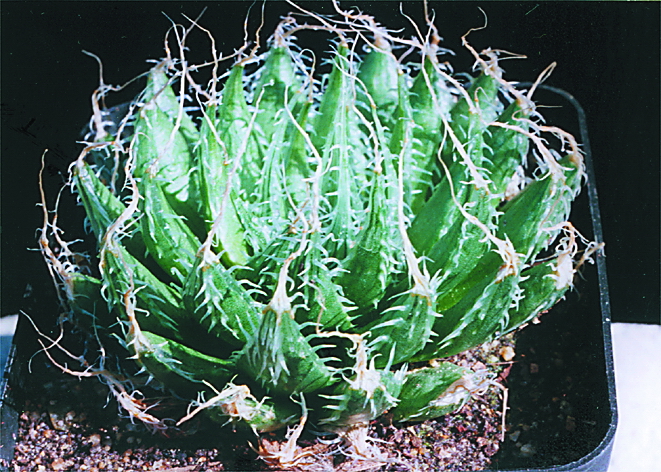
76. MBB6885 H. decipiens var. cyanea, Trakaskuilen, south of Beaufort West. 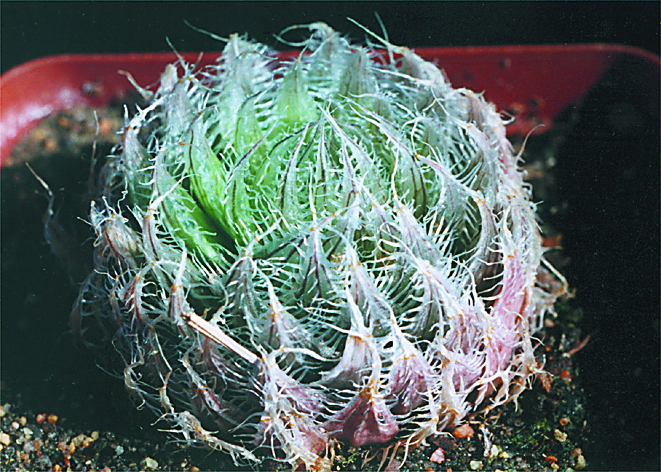
77. JDV93/71 H. decipiens, Gamkadam, west of Prince Albert. 
78. JDV93/71 H. decipiens, an H. mucronata var. inconfluens look-alke, also Gamkadam. 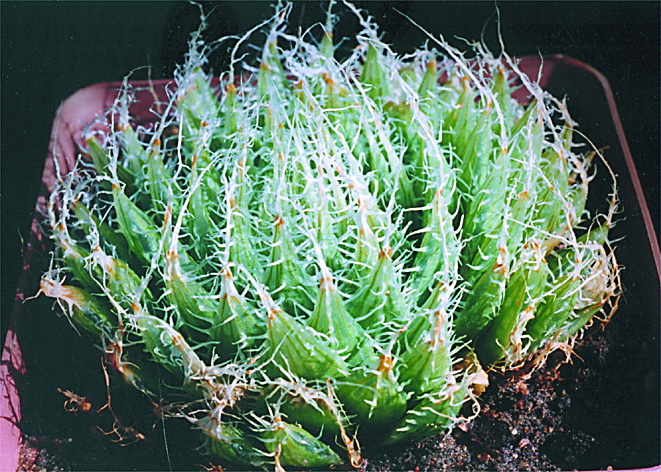
79. JDV86/84 H. mucronata var. inconfluens, east of Calitzdorp. 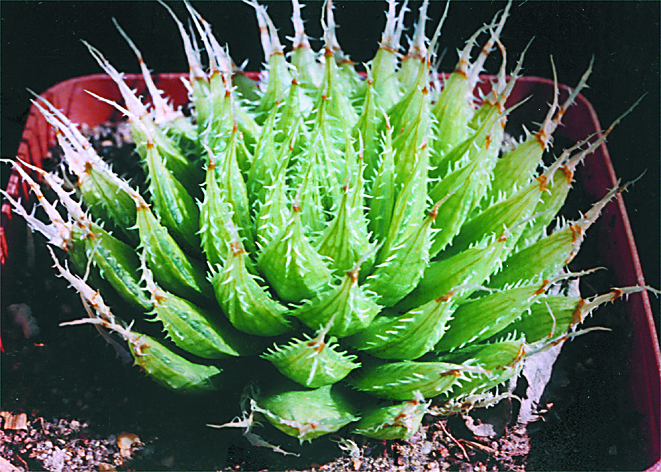
80. JDV91/74 H. mucronata var. inconfluens, northwest of Seweweekspoort, Ladismith.
